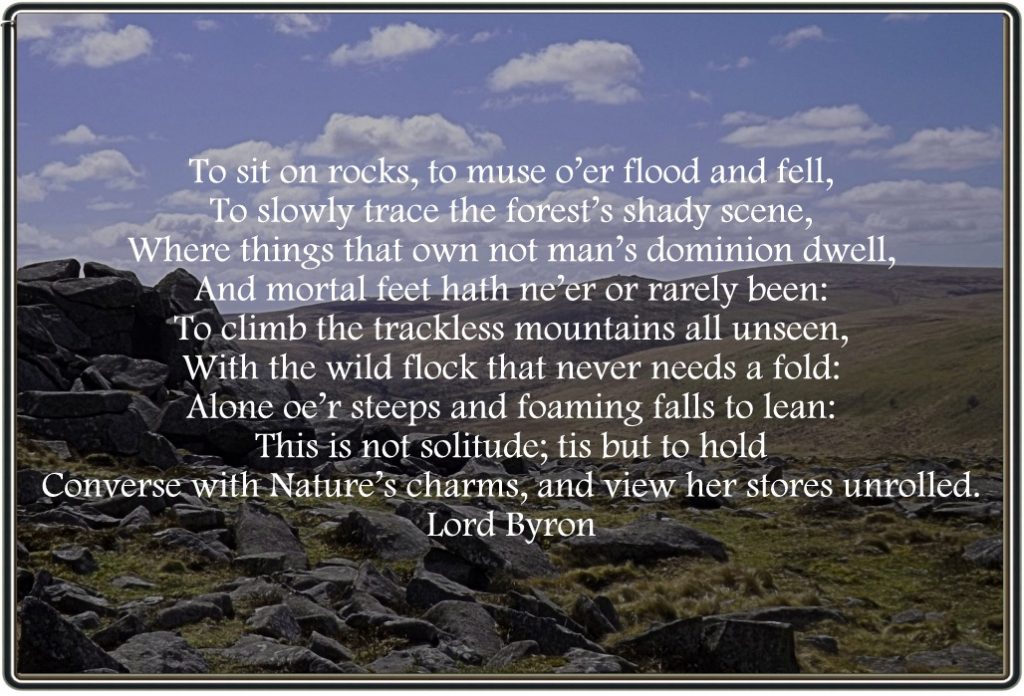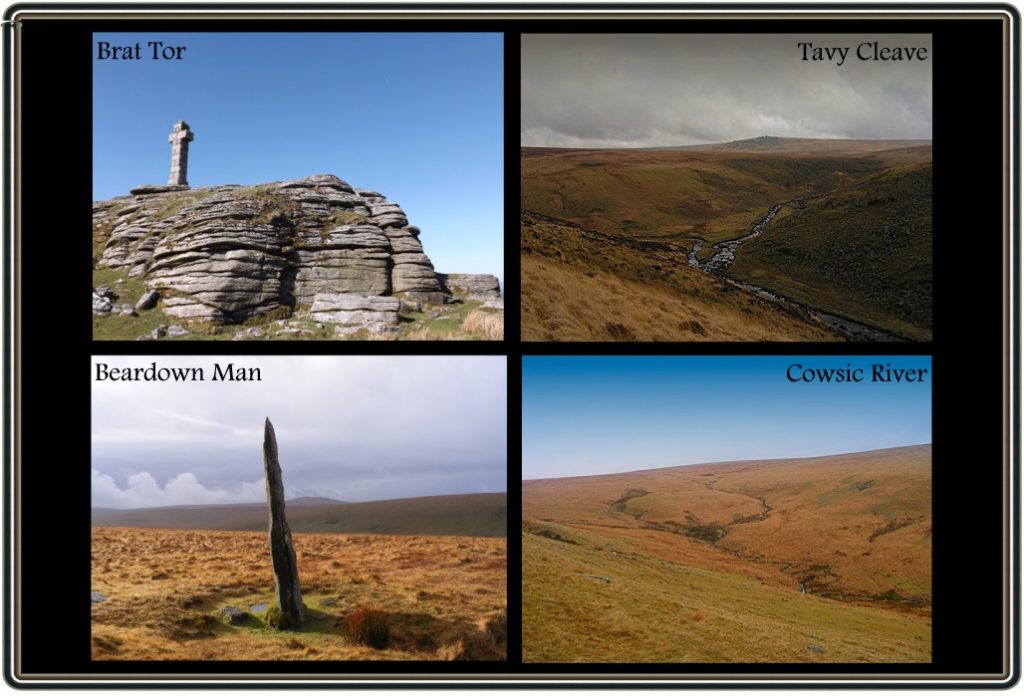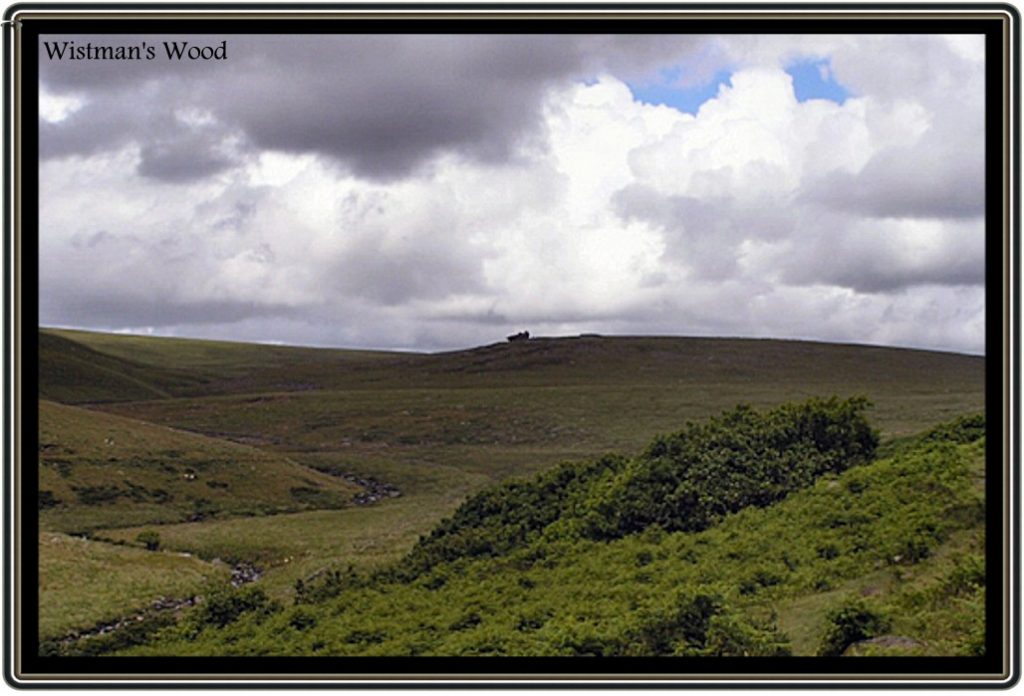
Imagine you are at Bridestowe and wanted to get to Wistman’s Wood how would you get there? Possibly ask some local advice or if you had a car consult one of the online route planners. These would provide you with a route that was 17.07 miles long and take about 29 minutes to get there. If you didn’t have car you could consult the bus timetables which would suggest getting a bus to Tavistock and then another to Two Bridges or if you were feeling really flush you may opt for booking a taxi? But would you ever consider walking there along a route that took you across the wild expanses of Dartmoor? Well, back in 1896 a party did exactly that staring off from the Fox and Hounds Inn (although today it’s known as the Fox & Hounds Hotel and Restaurant) at 11.30 am, and here’s their adventure.
“Official maps and other publications almost invariably call the great Devonshire upland “Dartmoor Forest”, but as a matter of fact very little of the actual moor is now covered by trees. The most famous spot is known as Wistman’s Wood, about four miles north east of Princetown. We determine to include it in our acquaintance with the moor, and select Bridestowe as our starting point. It is just half-past eleven as we emerge from the quaint old-fashioned Fox and Hounds Inn at Bridestowe and leave the beaten track, heading for Tavy Cleave. Passing between Bray (or Broad) Tor, surmounted by Widgery’s cross, and Arms Tor, we traverse fairly well know ground to the Tavy Valley, a fresh breeze tempting the sun’s rays inmost approvable fashion. We descend to the water at the picturesque point where the three valleys meet, and then plunge into the unknown by following the Tavy towards its source for some way.
The rivers and stream in this neighbourhood are jolly little chaps, and most accommodating. They are too big to be taken in a diving leap, but not too broad to be an effectual bar, and yet presenting just that spice of risk which makes the ford mildly exciting. We get across safely enough – which is more than a certain City Counsellor and Guardian of the Poor did on one occasion last year – and tramp along close to the gurgling rivulet, but the banks becoming declivitous we are under the necessity of scrambling up through a wealth of herbage to the higher ground. At a sharp turn of the stream is a little brook – the Redlake – and here we bid good-bye to the Tavy, and laying out the course by map and compass, strike into the heart of the moor. The long spell of dry weather has dried up all the morass; otherwise this tale had never been written. The grass is much greener and thicker than that we have hitherto passed, and numbers of birds start up as we trudge along till we again strike a stream, and here we pitch our camp in a lovely spot with backs against the heather-covered bank and with feet almost touching the sparkling water water in which the little brown moor trout dart anon almost like lightening, and anon lurk under the cool of a overhanging boulder; here, with no sign of man, with no indication of human presence or habitation we dispose of a well-earned meal. Yet neither this, or what we have passed over, or what lies infront of us can be called solitude.
We have a fairly extensive view as we carry out the duties of ministerers of the interior, but there is no vestige of woodland. Except where the purply grey granite appears, everything is green or ruddy – but short, fitting the panorama like a well cut garment. Was it always thus, we wonder. Old chronicles have it that the moor was afforested by King John, and was the first brown as a forest. Did trees once flourish along the borders of this pretty stream, tumbling down from the hill at the foot of which we are resting? “Time gentlemen.” Yes, it is time; it is two of the clock, and though Kedar’s tents are attractive we must be afoot.
The compass directs over an extensive tableland which is entered in the Ordnance register as Walkham Head. The association of the word “walk” strikes us as peculiarly incongruous for the whole area is as unsuitable for pedestrians as can be imagined. Patches of grass and reed are divided by ditches of peaty mud, which the sun has partially dried and shrunk, leaving fissures in all directions gasping for moisture. In none but the driest weather would it be possible to cross this boggy plateau, into which one can easily drive a walking stick to the handle. It is just the sort of place suggested in connection with the old couplet – “He who cannot happy be with kind ladies by the fire. Deserves to be on Dartymoor a-stugged in the mire.”
But “bad lands” have limits and after a toilsome half hour we come to the River Cowsic, that of which gives us a magnificent view of the country beyond the high ridge we have been crossing. We note the very beginning of the Cowsic and bear a little to the left for Devil’s Tor, under whose crowning block of granite is a twelve-foot monolith known as Beardown Man, which readers of the Rev. S. Baring-Gould will probably remember. Still steering by the unerring compass we are not long in arriving within sight of our goal, and an insignificant affair it appears to be. The wood formerly extended for for about three quarters of a mile, but a decade ago a fire destroyed the greater portion of it, and now it consists of three separate portions, lying along the side of a granite strewn hill at the bottom of which the West Dart makes the best of its way among huge blocks of igneous rock lying about in all directions as if a company of giants had been playing marbles and had left their playthings in the middle of the game.
On the borders of the first section of “forest” is a keepers house – a lonesome and eerie place it must be in the winter, though pleasant enough now. The “Forest” trees are mostly oak, but none are over ten feet high, and the majority of them are under nine. They grow up from among a profusion of slabs and lumps of granite, and in their flourishing days must have presented a charming spectacle; now they are inferior to those which form the pygmy wood infringing Black Tor on the West Okement. Traces of the fire are evident on every side. Bare trunks – some of them absolutely indistinguishable in colour from the granite around and clear spaces tell their tale. That is plain to the eye; what we should have made equally clear is the history of the wood. One legend is that a Countess of Devon planted it; another that it was a Druidic headquarter, where elaborate and fantastic ceremony followed the discovery of the sacred oak mistletoe.
Resuming our journey, we pass Crockern Tor, on the top of which the Stannary Court used to be held, and a half-past four we find ourselves for the first time since half-past eleven on a road. We make for Two Bridges, situated just below the junction of the Cowsic and the West Dart. Why it is called two Bridges is not apparent since there is only one bridge, though that one has two spans. Double nomenclature seems to be popular here, for the hostelry sign reads – “Two Bridges Hotel (Saracen’s Head).” We opine that some returned Crusader must have brought the latter name to the place, possibly when he was astonishing the natives with some true tale of his adventures, for it is not likely that the present day can claim a monopoly in that respect. We go into the hotel – merely out of curiosity’s sake of course – and find there two members of the Plymouth Pedestrian Club, and as our own walk is under the auspices of the Exeter Pedestrian Club, some interesting notes are exchanged. Then we set out to reel of the eight or nine miles to Tavistock, passing within a gunshot or two of Princetown Prison, and turning off the road at Merrivale to have a look at the hut circles and avenues, the work of our ancestors of two thousand years ago. It has been the most glorious day, and we catch the city-bound train with the satisfaction of having completed a walk which has embraced all the best features of the moor with the attraction of virgin ground thrown in.” – The Exeter Flying Post, July 4th, 1896.
Well, there you have it, a visit to Wistman’s Wood the long way around. There is a slight suggestion that the author was none to impressed with the place, especially after such a long jaunt? A couple of points – firstly King John nor Countess Isabella de Fortibus, the Countess of Devon planted the trees the origins of the wood date back much further than that. Secondly the “Keeper’s house” would have been the warrener’s house belonging to a small rabbit warren that once existed there. With regards to the Saracen’s Head confusion, the original name simply came from the fact that it was Sir Francis Buller who built the inn and on his coat of arms appeared a Saracen’s head – nothing to do with Crusaders at all. I would imagine at the time of this visit the establishment was undergoing a transition from an inn (the Saracen’s Head) into a hotel – the Two Bridges Hotel and was so worded to avoid any confusion.
 Legendary Dartmoor The many aspects past and present of Dartmoor
Legendary Dartmoor The many aspects past and present of Dartmoor



